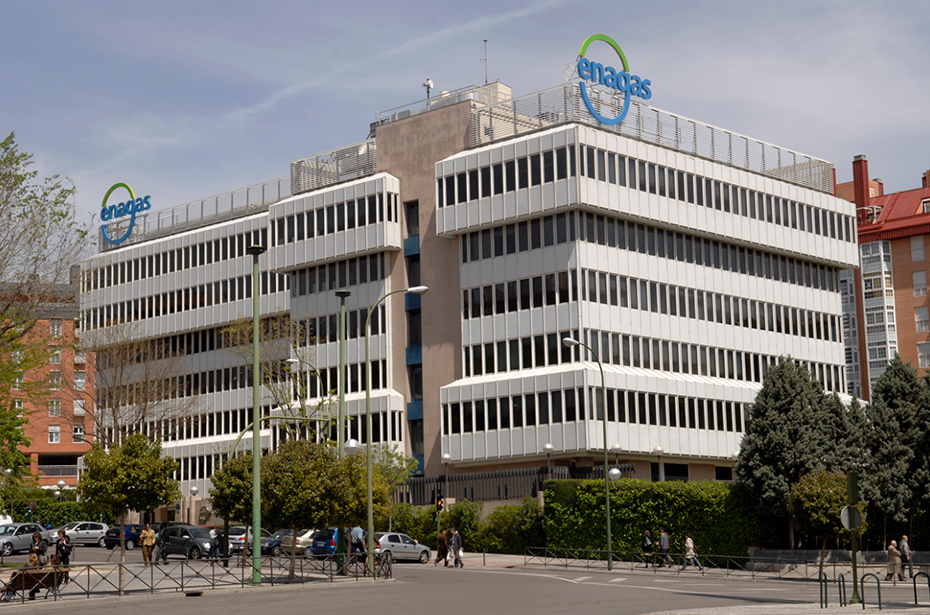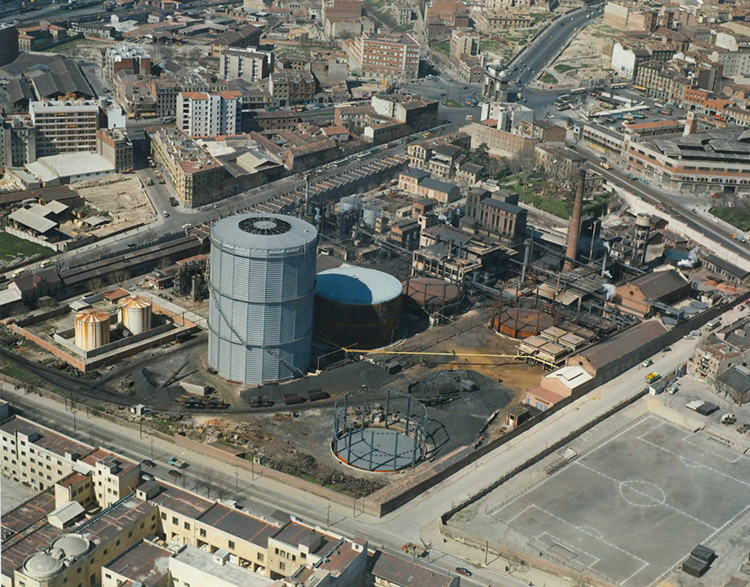Natural gas plays a key role in Spain’s industrial fabric, particularly in such major economic sectors as metallurgy, chemicals, refining, paper and building materials. This energy source also plays a vital role in the activity of commercial facilities and services, and in domestic use. It is also serves as a back-up for renewable energies through power generation in combined-cycle power plants. In this way, natural gas allows fast and effective compensation at times of low renewable energy production caused by lack of wind or sunlight.
Since its discovery until its current uses, this energy source has had a history dating back thousands of years. The first knowledge of natural gas was gained in what is now present-day Iran, between the years 6000 and 2000 BC. It is thought that a chance lightning strike coming into contact from gas emanating from a fault may have caused a great pillar of fire to appear. This event served to reinforce the beliefs of ancient peoples of a god hidden inside the flames.
About 2000 years ago, the Chinese began to drill through the ground using bamboo poles tipped with a metal spike to collect brine from underground deposits. On occasion, when their drilling reached a sufficient depth, in addition to brine, they found oil and natural gas. According to historical accounts, the gas was burnt to heat the brine, evaporate off the water and extract the salt from it. Written records also show that the Ancient Greeks also had knowledge of crude oil and natural gas contained in the subsoil.
In the modern age, the standardisation of the use of gas in the energy chain began with the exploitation of a town gas, manufactured from coal, which had a lower calorific value and was more polluting. The technology was later developed to allow direct extraction from deposits of natural gas, which is the least polluting of the fossil fuels currently used in our homes and industry. This development took place in the following way:
In Europe, the first uses of a coal gas in the energy chain occurred in the 18th century in Great Britain for lighting homes and streets. In 1816, the city council of the American city of Baltimore became the first to use this type of manufactured gas to light all the city’s street lamps.
In 1821, the first natural gas (methane) well was dug in the United States, which although rudimentary, was similar to what we understand to be a natural gas well today. As a result, the Fredonia Gas Light Company was founded, the first American natural gas distribution company, which piped natural gas to adjacent houses in this town in the state of New York. Nevertheless, for most of the 18th and 19th centuries, the gas used was almost exclusively manufactured for use as a source of light.
The shift from town gas manufactured from coal to natural gas or methane was key for industrial development and, more particularly, very relevant in environmental terms. The use of natural gas totally does away with emissions of sulphur dioxide and suspended particles, and substantially reduces emissions of nitrogen oxide and carbon dioxide.
In this context, a milestone occurred in 1885 for the expansion of natural gas that would allow other uses to be given to this energy source. That year, the German chemist Robert Bunsen patented an industrial burner (later known as the ‘Bunsen burner’) that enabled the gas to be heated through a network of pipes and transported to homes or factories to provide heat for boilers, furnaces, radiators and cookers. This became a major step which, together with the industrial exploitation of natural gas fields, would allow the remarkable development of energy efficiency in the industrial sector.
It was in the 1960s that the first European regasification plants received their initial supplies from wells in Libya and, a few years later, from fields in Algeria. In this context, the Barcelona Regasification Plant, which began operations in 1969, is the oldest regasification terminal on mainland Europe in continuous operation. After the gradual incorporation of the latest technology, it is today a benchmark for energy efficiency.
The Enagás head office: symbol of the evolution of the use of gas in Spain.
The site of the present-day Enagás head office in Madrid is emblematic of this evolution, from the use of town gas manufactured from coal to its use in lighting until the introduction of natural gas into industry. The land on which this building and surrounding ones stand, in the Arganzuela neighbourhood, was the site of the Madrid gas works, popularly known as the ‘Gasometer’. Trains with wagon-loads of coal arrived at this factory where the town gas that lit the city’s streets was manufactured.
The factory once occupied the block bordered by the thoroughfares of Ronda de Toledo, Paseo de las Acacias and Paseo de los Olmos, and Calle del Gasómetro. There were several furnaces (of which one smokestack has been preserved), coal stores, gas storage tanks (gasometers), company offices, and even worker accommodation. The gas was produced from a mixture of soft coal and resin. The factory relocated to Manoteras in 1967. The old factory on Ronda de Toledo was soon demolished and the site used for the construction of the current head office of Enagás.
From its head office on Paseo de los Olmos, the company played a crucial role in the subsequent development of the natural gas network in Spain.

The present-day head office of Enagás stands on the former site of the Madrid gas works.
